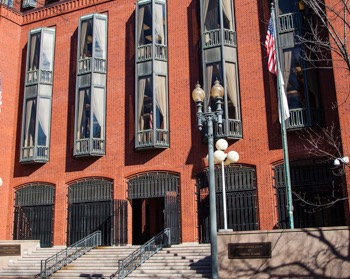 REG Synthetic Fuels, LLC v. Neste Oil OYJ, (Fed. Cir. Nov. 8, 2016) (Before Prost, Taranto, and Chen, J.) (Opinion for the court, Chen, J.)
REG Synthetic Fuels, LLC v. Neste Oil OYJ, (Fed. Cir. Nov. 8, 2016) (Before Prost, Taranto, and Chen, J.) (Opinion for the court, Chen, J.)
Neste filed a petition for inter partes review of REG’s U.S. Patent No. 8,231,804 (‘804 patent) and the Patent Trial and Appeal Board ultimately found all of the challenged claims anticipated by either of two references. REG appealed, citing exhibits allegedly demonstrating a date of invention earlier than the prior art.
The ‘804 patent is directed to paraffin compositions containing primarily even-carbon-number paraffins and methods of making them. Even-carbon-number paraffins are good insulators They can absorb heat during warm weather and release heat into the home during cooler weather. The ‘804 patent provides paraffin compositions containing at least 75% or 80% (by weight) even-carbon-number paraffins, through hydrogenation and deoxygenation of naturally occurring fatty acids and esters.
The Court agreed with the Board that certain claims of the ‘804 patent were anticipated by Craig. Craig disclosed hydrocarbon products obtained from naturally occurring feedstocks as peak area percentages for each hydrocarbon. REG argued that the peak area percentages disclosed in Craig could not be accurately converted to weight percentages. The Court disagreed, finding that a person of ordinary skill in the art could use well-known relative response factors to convert area percentages into weight percentages. There was no inherency issue because Craig disclosed a unit of measurement that could easily be converted using reliable techniques.
REG also argued that Dindi was not prior art. Dindi disclosed a process for converting renewable resources into paraffins to produce a product with at least a 2:1 ratio of even to odd carbon-number paraffins. REG argued that it could prove earlier conception than Dindi based on two exhibits admitted into evidence and one exhibit that the Board excluded based on hearsay. The Court found that the Board erred in excluding that exhibit because it was offered for a non-hearsay purpose. The exhibit was offered to show that the inventor communicated the invention to a third-party, not to prove a date of invention. The three exhibits, taken together, provided documentary evidence that the inventor of the ‘804 patent had conceived of the invention and disclosed it to a third party before the filing date of Dindi.
The Court affirmed the Board’s finding that Craig anticipated claims 1, 3, 4, and 8 of the ‘804 patent. With respect to the remaining challenged claim (claim 5), the Court and reversed the Board’s findings on Dindi and REG’s prior conception. The case was remanded for the Board to make findings on diligence or reduction to practice and to address the exclusion of other exhibits that may be relevant for diligence and reduction to practice.
Anticipation can be found where prior art discloses the claimed range in a different unit of measure that can be converted using reasonable and reliable methods. Prior invention is fact-intensive and must take into account all of the relevant evidence. Exhibits offered to show the fact of a communication, and not the truth of the communication’s contents, are not excludable as hearsay.
[Troutman-Ad]
[Troutman-About]

![[IPWatchdog Logo]](https://ipwatchdog.com/wp-content/themes/IPWatchdog%20-%202023/assets/images/temp/logo-small@2x.png)


![[Advertisement]](https://ipwatchdog.com/wp-content/uploads/2024/04/Patent-Litigation-Masters-2024-sidebar-early-bird-ends-Apr-21-last-chance-700x500-1.jpg)

![[Advertisement]](https://ipwatchdog.com/wp-content/uploads/2021/12/WEBINAR-336-x-280-px.png)
![[Advertisement]](https://ipwatchdog.com/wp-content/uploads/2021/12/2021-Patent-Practice-on-Demand-recorded-Feb-2021-336-x-280.jpg)
![[Advertisement]](https://ipwatchdog.com/wp-content/uploads/2021/12/Ad-4-The-Invent-Patent-System™.png)







Join the Discussion
No comments yet.